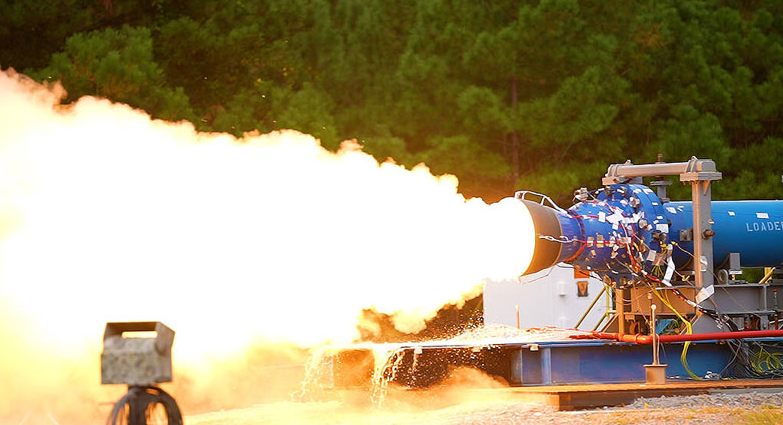NASA reported this on September 14 at the Space Flight Center. Marshall, the third static fire test of a prototype of a promising rocket booster for later Artemis missions, which will also affect flights to Mars, took place. A scaled-down prototype of the BOLE accelerator was designed and manufactured by Northrop Grumman. The prototype fire test allows us to gather critical information about the accelerator materials and components to begin mass production.
The first three Artemis missions, one of which has already been successfully completed following the return of the unmanned Orion spacecraft to Earth, involve equipping the SLS launch vehicles with pairs of old solid rocket boosters left over from the space shuttle program. For missions four through eight inclusive, Northrop Grumman will produce five pairs of upgraded Flight Support Booster-2 boosters. In fact, they will be manufactured according to old designs and each will receive an additional fifth section of solid booster (the original Space Shuttle boosters consist of four sections).
For the ninth Artemis mission, Northrop Grumman is preparing completely new BOLE (Obsolescence Reinforcement and Life Extension) boosters. In the future, they will become the basis for sending missions to Mars. BOLE thruster bodies will be made of composite materials instead of steel, making them lighter with the same or even more thrust, which means more payload in space.
On September 14, at the NASA Test Site, Northrop Grumman conducted the third static fire test of the BOLE accelerator prototype. This is a smaller copy of the future accelerator, fire tests of which were also carried out in 2021 and 2022. Previously, third tests of the prototype were not planned. The company hoped to conduct a third fire test on a full-scale accelerator, which was expected to happen in the spring of 2024. More data might be needed to make a full-scale prototype.
The September 14 tests were successful. Data was collected on the stability and quality of materials to protect the nozzles and composite body from the effects of temperature. However, engineers often monitor engine operating conditions across hundreds of channels simultaneously, which provides a sufficient set of data for product analysis. Reinforcements are vital to the Artemis program. During the first 2 minutes of flight, they provide the rocket with more than 75% thrust. The 24-inch prototype had a thrust of 37 tons, which is considered a good result for its size.

THE NAIS IS OFFICIAL EDITOR ON NAIS NEWS

